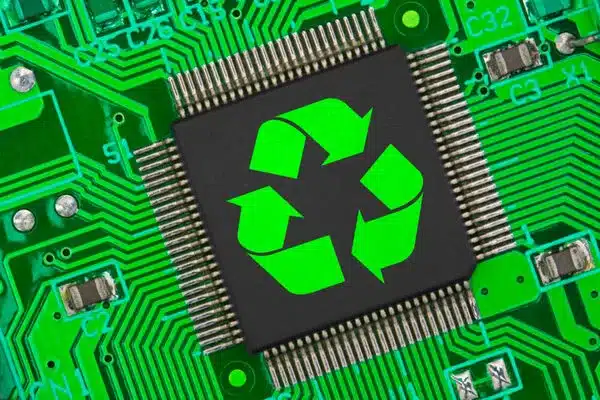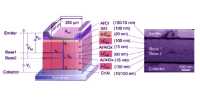Organic electronics are electronic devices and materials made from organic components like carbon-based molecules. These materials may have various advantages over standard inorganic electronics, including flexibility, lightweight, low-cost production, and lower environmental impact. Organic electronics must be sustainable over their full lifecycle to maximize their environmental and social benefits.
Organic electronics can make a significant contribution to decarbonization while also reducing the usage of rare and valuable raw materials. To do so, it is required not only to improve manufacturing processes, but also to develop technical recycling solutions as early as the laboratory phase. Materials scientists from Friedrich-Alexander-Universität Erlangen-Nürnberg (FAU) are now supporting this circular technique alongside experts from the United Kingdom and the United States.
Organic electronic components, such as solar modules, have a number of unique characteristics. They have a broader variety of uses than crystalline materials because they may be placed in extremely thin layers on flexible carrier materials. Because their photoactive chemicals are carbon-based, they also help to reduce the use of rare, expensive, and occasionally poisonous elements like iridium, platinum, and silver.
We really need to start thinking about recycling in the laboratory. This includes employing substrates that can be easily recycled or are as biodegradable as the active ingredients. Using multilayer designs early in the product design phase could ensure that different materials can be easily separated and recycled at the end of the product’s lifecycle.
Prof. Dr. Christoph Brabec
Organic electronic components are seeing rapid expansion in the realm of OLED technology, particularly for television and computer screens. “On the one hand, this is progress, but on the other hand, it causes some problems,” explains Prof. Dr. Christoph Brabec, Chair of Materials Science (Materials in Electronics and Energy Technology) at FAU and Director of the Helmholtz Institute Erlangen-Nürnberg for Renewable Energy (HI ERN).
Brabec, as a materials scientist, sees the risk of permanently embedding environmentally good technologies into a device architecture that is not overall sustainable. This impacts not only electronic equipment, but also organic sensors in fabrics, which have a very short functioning life. “Applied research, in particular, must now set the course to ensure that electronic components and all their individual parts leave the smallest ecological footprint possible throughout their entire lifecycle,” says Brabec.

More efficient synthesis and more robust materials
The advancement of organic electronics is critical here, as new materials and more efficient manufacturing procedures reduce outlay and energy consumption throughout production. “When compared to simple polymers, the manufacturing process for the photoactive layer requires significantly more energy because it is deposited in a vacuum at high temperatures,” Brabec explains.
As a result, the researchers propose less expensive and more environmentally friendly technologies, such as water-based deposition and inkjet printing. “One major challenge,” says Brabec, “is developing functional materials that can be processed without toxic solvents that are harmful to the environment.” In the case of OLED screens, inkjet printing allows for the substitution of organic elements for valuable metals such as iridium and platinum.
In addition to their efficiency, the operating stability of materials is decisive. Complex encapsulation is required in order to protect the vacuum-deposited carbon layers of organic solar modules, which can make up to two thirds of their overall weight. More robust combinations of materials could contribute to significant savings in materials, weight and energy.
Planning the recycling process in the laboratory
To make an accurate assessment of the environmental impact of organic electronics, the complete product lifecycle must be examined. Organic photovoltaic systems continue to lag behind traditional silicon modules in terms of output, although they produce 30% less CO2 during the manufacturing process. According to Brabec, aiming for maximal efficiency levels is not everything: “18 percent could make more environmental sense than 20 percent if the photoactive material can be manufactured in five steps instead of eight.”
Furthermore, if you examine closely, the shorter functioning life of organic modules is also relative. Although silicon-based solar modules live longer, they are extremely difficult to recycle. “Biocompatibility and biodegradability will increasingly become important criteria, both for product development as well as for packaging design,” says Christoph Brabec.
“We really need to start thinking about recycling in the laboratory.” This includes employing substrates that can be easily recycled or are as biodegradable as the active ingredients. Using multilayer designs early in the product design phase could ensure that different materials can be easily separated and recycled at the end of the product’s lifecycle. “This cradle-to-cradle approach will be a critical prerequisite for establishing organic electronics as a critical component in the transition to renewable energy,” says Brabec.













